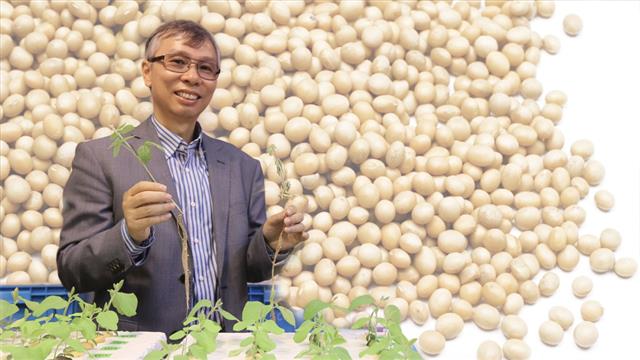The world is running out of farmland to feed its people. According to the UN, the world's population will grow from 7.2 billion in 2013 to 9.6 billion in 2050, yet the area of arable land will only increase by 5% between 2005 and 2050. One major problem is that over 900 million hectares of land is salinized and 10% of this is in China.
China, the world's most populous country, has 6.7 million hectares of saline arable lands, ranking fourth worldwide. The causes of salinization are usually improper irrigation, excessive evaporation of salty underground water, and intrusion of seawater. Salinization hampers both the productivity and quality of crops. Developing salt tolerant crops, therefore, is a pressing issue.
Prof. Lam Hon-Ming, professor in the School of Life Sciences and director of the Centre for Soybean Research, has succeeded in identifying the gene that makes soybeans salt tolerant.
Professor Lam's present research is built on a significant discovery he made when he and his team decoded 31 soybean genomes in 2010—wild soybeans have much higher biodiversity than cultivated ones and they may have retained genes that help them to fend for themselves in the natural environment . On the other hand, plants pampered by humans may have lost the genes that enable them to cope with adverse conditions. This cornerstone finding was reported as a cover story in Nature Genetics in Dec. 2010.
In the current research, Professor Lam and his team extracted the salt-tolerance gene from wild soybeans using the latest technologies in genomics, genetics, and molecular biology. The researchers managed to identify the positions of the main genes in 11 of the traits they observed. They also found an area in chromosome 3 that specifically controls salt tolerance. However there are dozens of genes in that area. Using a variety of methods, the team finally found their target gene.
The research was published in Nature Communications in July 2014.
[Extracted from CUHK Newsletter Volume 443]



